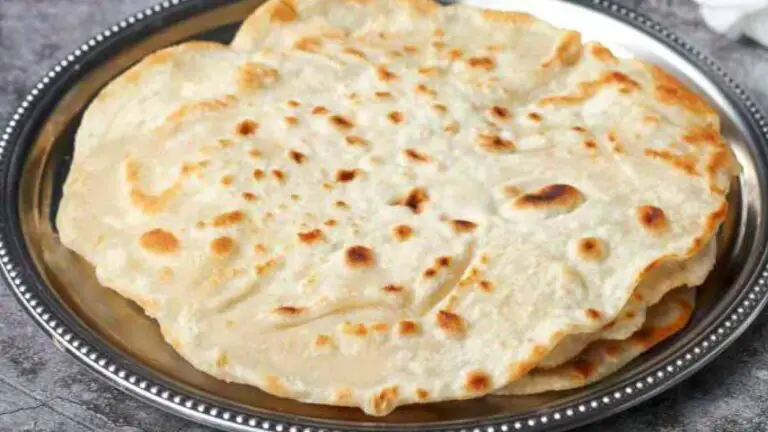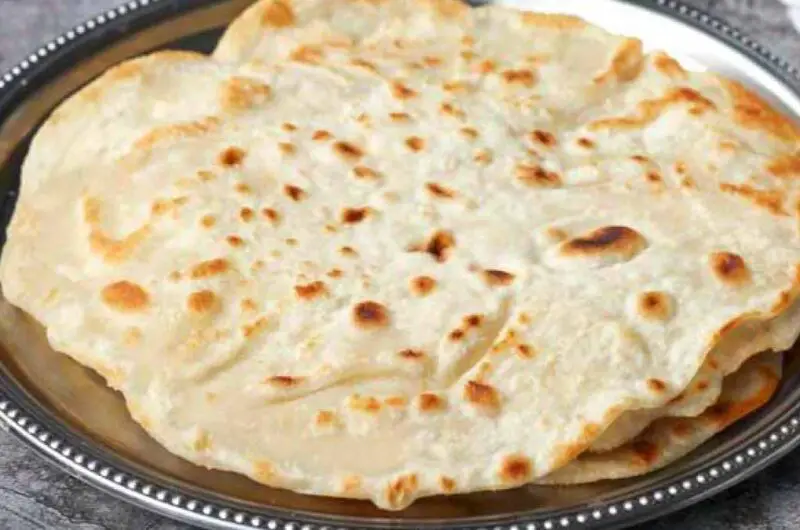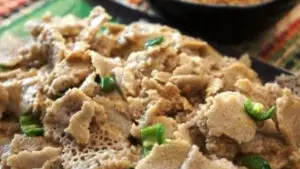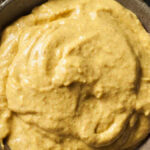Kita is a very thin traditional flatbread native to Ethiopia. It is typically made from simple ingredients such as flour, water and salt. Kita flour is often prepared from a variety of grains, such as wheat, teff, maize, barley, chickpeas, as well as a combination of these grains. Usually, it is cooked on a frying pan or a small-sized carpe maker.
You can eat Kita by itself with a little Awaze and some hot coffee or tea. However, it is mostly used to make Chechebsa (Kita Firfir), a breakfast dish that is very popular through-out Ethiopia.
Ingredients Required to Make Kita
- 1.75 cups of wheat flour
- 1 cup of water (lukewarm)
- 2 tbsp of Niter Kibbeh (Ethiopian clarified butter)
- 0.25 tsp of Salt
How to Make Kita (Step-by-Step Tutorial)
- Add the wheat flour and salt into a stand mixer, and start combining them adding water gradually, until the mixture forms into an elastic and smooth dough.
- Remove the dough from the mixer and divide it into four pieces of the same size.
- Then roll each of these four pieces of dough into thin flat circles with about 0.25 inches of thickness.
- Next, heat your crêpe maker or a suitable pan, and 0.5 tbsp of Niter Kibbeh.
- Now place the flat pieces of dough on to your crêpe maker or pan at medium heat. Make a few tiny holes all over the dough’s surface using a fork.
- Cook each dough in turn until each of their sides turn crispy with a golden-brown color, also with the distinctive brown spots of a typical Kita.
Tips For Making Great Kita
- The key to making excellent kita is to thoroughly knead the dough so that it is elastic enough to roll out. Yet, the process of kneading the dough to get it to this stage can be highly time- and labor-intensive. Consequently, a stand mixer with a dough hook is recommended. In comparison to 8 to 10 minutes with a mixer, it takes roughly 25 minutes to knead the bread dough by hand.
- Be careful when adding flour. If the proportion of flour is too much, It may alter the Kita’s texture and make it heavier.
- Before beginning to flatten and shape the Kita, check that the dough is elastic enough when kneeding it. Otherwise, it will be challenging to make the Kita thin, and the dough will have a propensity to tear if the dough is not sufficiently elastic.
- The Kita needs to be rolled and flattened as thinly as possible, to a thickness of roughly half an inch. On the surface you’ll be rolling your dough on, lightly sprinkle some flour. This will help make rolling and flattening the dough easier to handle. You can also roll the dough rollebetween two silicone mats.
Equipment Recommendations to Make Kita
Affiliate Disclaimer: As an affiliate, we get commissions for purchases made through links on this website from Amazon and other third parties.












